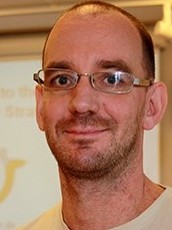-
What is missing from a complete structural map of the cell?
Arne Elofsson
Professor
Science for Life Laboratory,
Stockholm University 

However, most proteins do not act alone but through interactions with other proteins (and other molecules). Therefore, it is essential to understand not only the structure of a protein but also its interactions. Here, systems biology approaches are often used to understand what interactions are made but these studies mostly ignore the atomistic details about the interactions, i.e. how, the interactions are made.
Here, I will present recent progress in the structural bioinformatics field with a focus on what is still missing to provide a complete picture of all interacting macromolecules in a cell. In particular there are three problems that need to be solved: ⅰ) improved detection of the parts that make up a cell; ⅱ) accurate predictions of interactions of intra- and inter-residue contacts for all type of proteins; and ⅲ) improved accuracy of both experimental and theoretical methods to identify protein-protein interactions.
Dr. Elofsson is a prolific scientist with 122 scientific publications, with an H-index of 50 and a total of over 8900 citations. He is currently deputy editor for PLoS Computational Biology and has served as associate editor for PLoS Computational Biology and Protein Science. Active in community service, Dr. Elofsson lead the Society for Bioinformatics in the Nordic countries (SocBiN) as its president from 2004 until 2015, organizing the SocBiN conference in 1999 and 2012 and co-organizing ISMB 2010 and Protein Society 2011. He frequently gives invited lectures at conferences and workshops and has received several awards, including the Sven and Ebba-Christina Hagbergs prize in 1999.